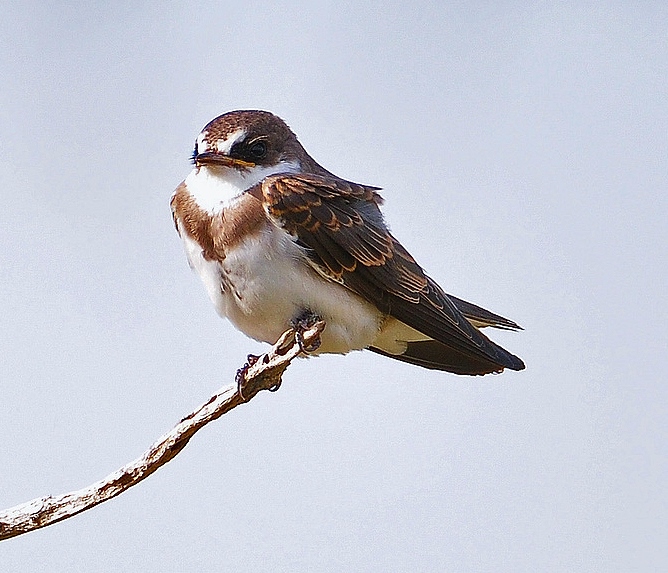 |
| Photo by Ian White (Flickr) |
Common name:
banded martin (en); andorinha-das-barreiras-de-colar (pt); hirondelle à collier (fr); avión cinchado (es); weißbrauen-uferschwalbe (de)
Taxonomy:
Order Passeriformes
Family Hirundinidae
Range:
This African species is found breeding from Ethiopia, through Kenya, D.R. Congo and Angola, and south to South Africa. The more southern population migrate north to winter in from Gabon and the Central African Republic to Ghana.
Size:
These birds are 15-17 cm long and weigh around 25 g.
Habitat:
The banded martin is mostly found in dry grasslands, scrubland, marshes, dry savannas and pastures. It is rarely observed over rocky shorelines or along the borders of estuaries. They are present from sea level up to an altitude of 3.000 m.
Diet:
They take flying insects on the wing, by flying slowly near the ground, and often hawking prey disturbed by zebras, antelope or cattle. They are known to take beetles, moths, flies, mantid nymphs and lacewings.
Breeding:
Banded martins breed in August-March. The nest is a structure made of feathers and grass, placed in a chamber connected to a upward-sloping tunnel, which is dug into a stream bank, erosion gully or sand pit.There the female lays 2-4 glossy white eggs, which are incubated by both parents. There is no information regarding the length of the incubation period. The chicks are fed by both parents and fledge 21-24 days after hatching.
Conservation:
IUCN status – LC (Least Concern)
This species has a very large breeding range and is is described as generally uncommon, although locally common in parts of East Africa and frequent in Ethiopia. The population is suspected to be increasing owing to agricultural development.







